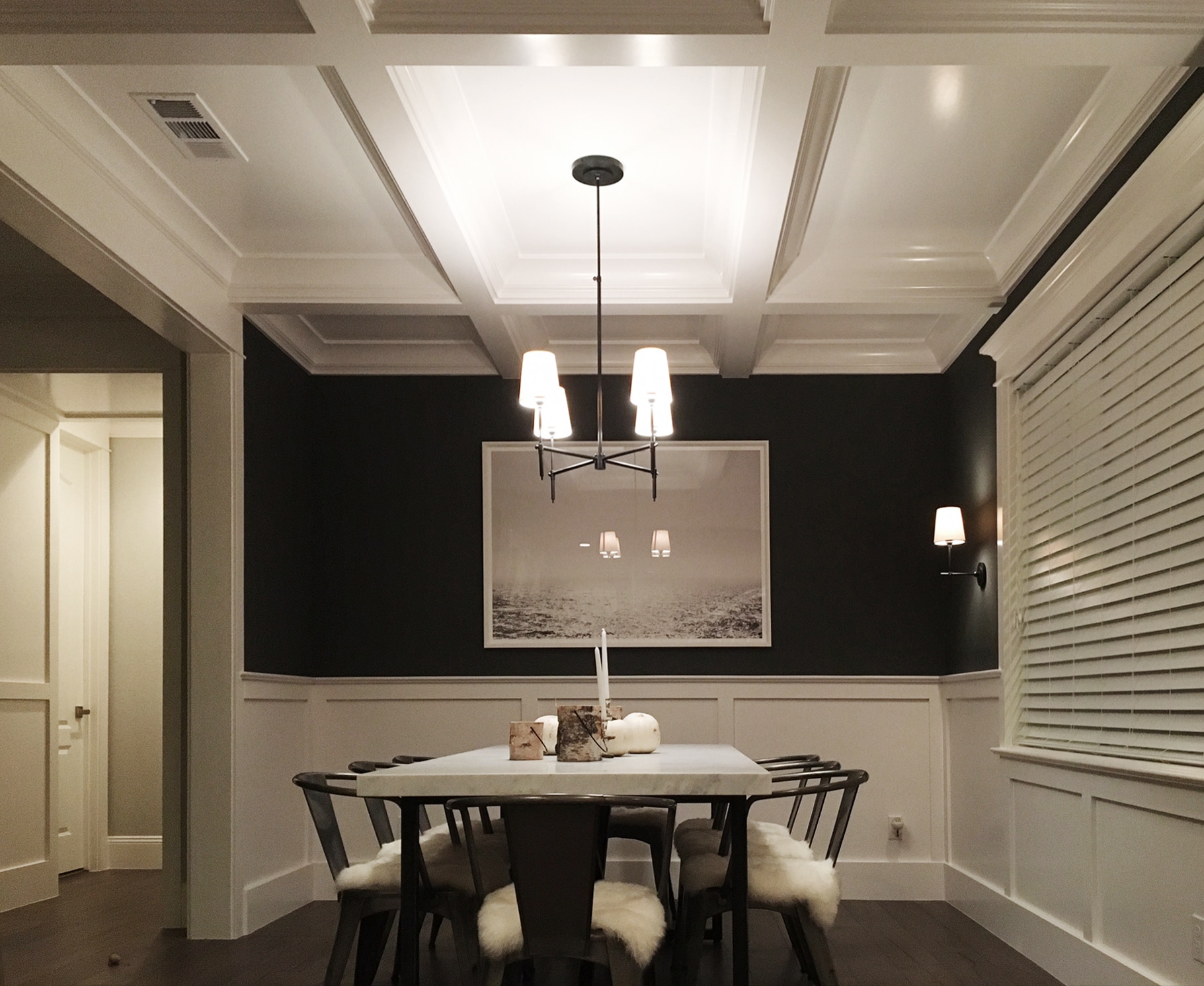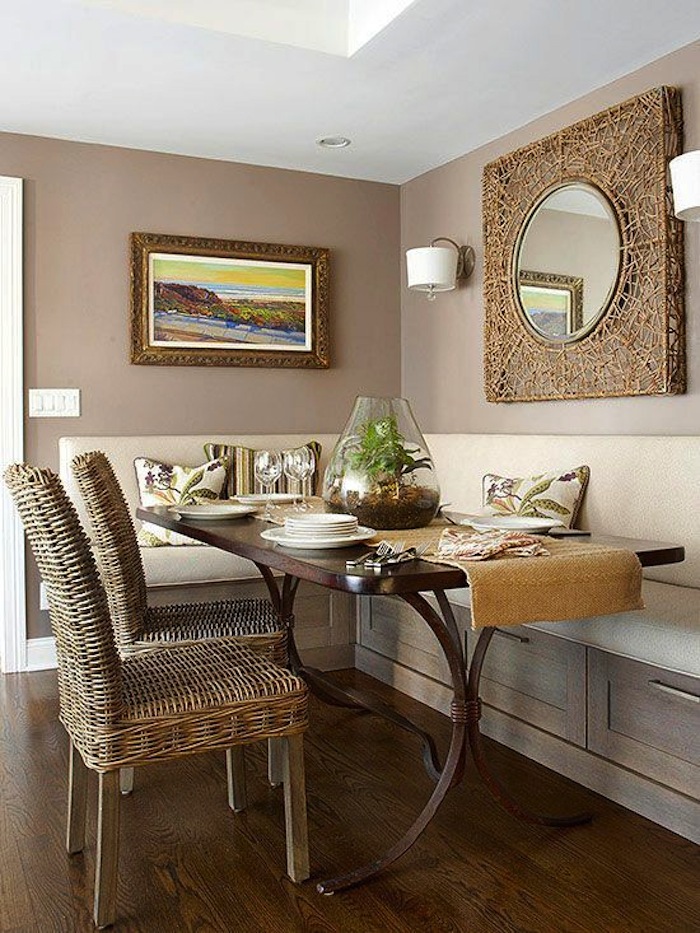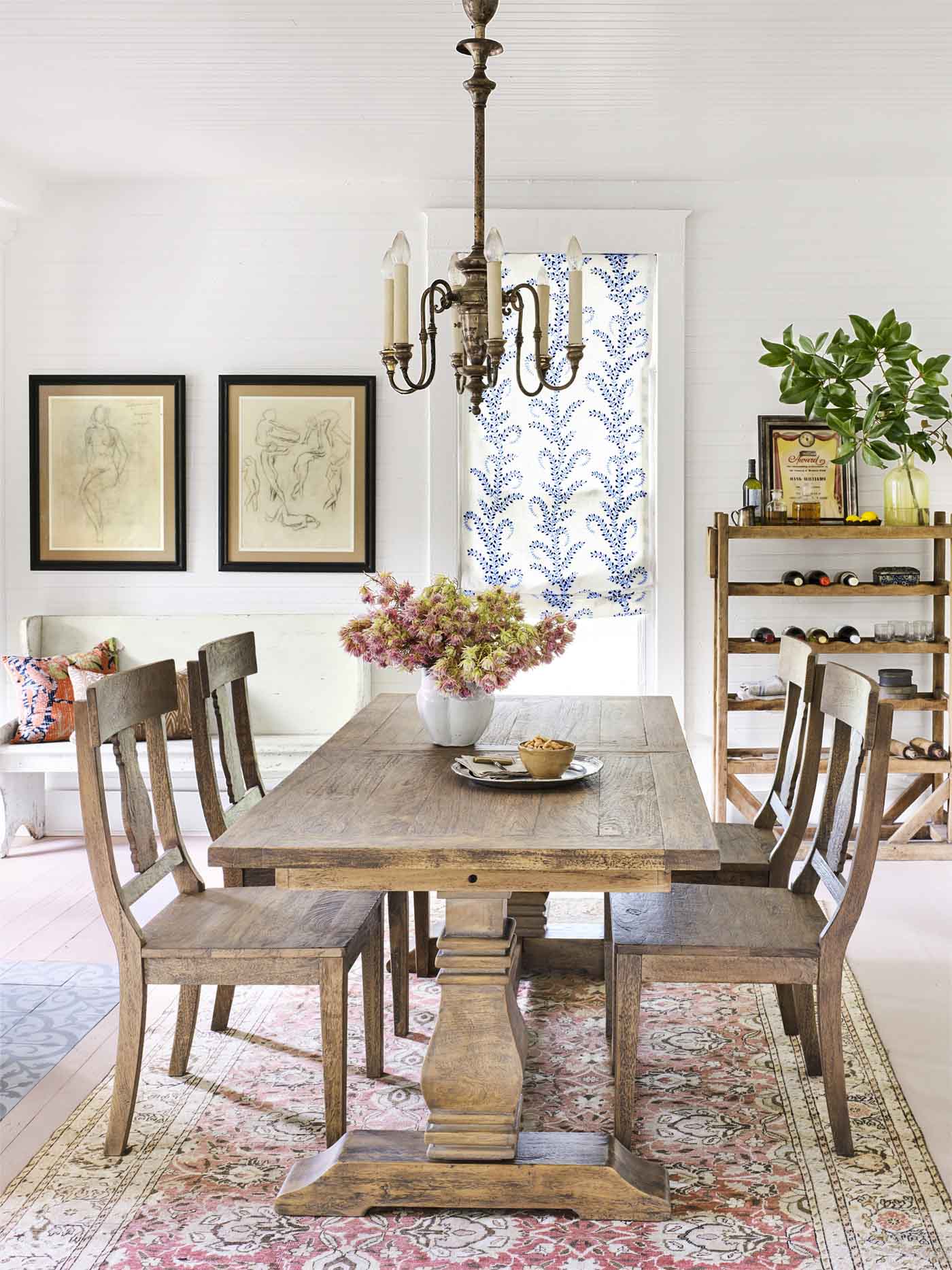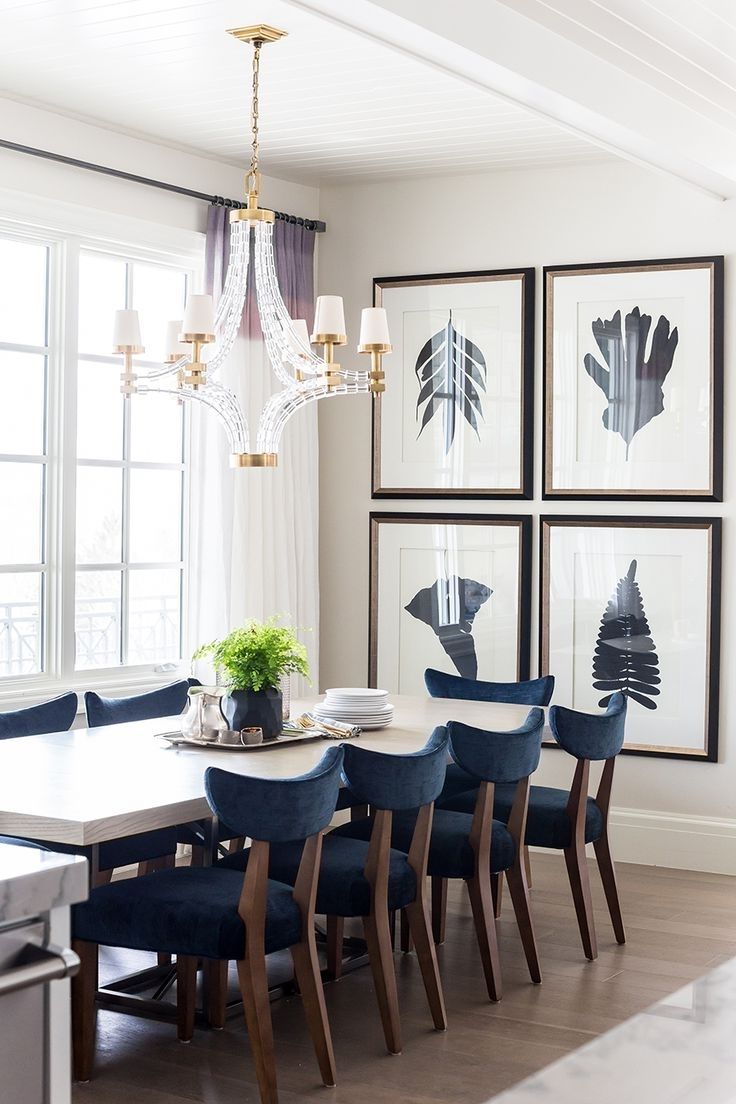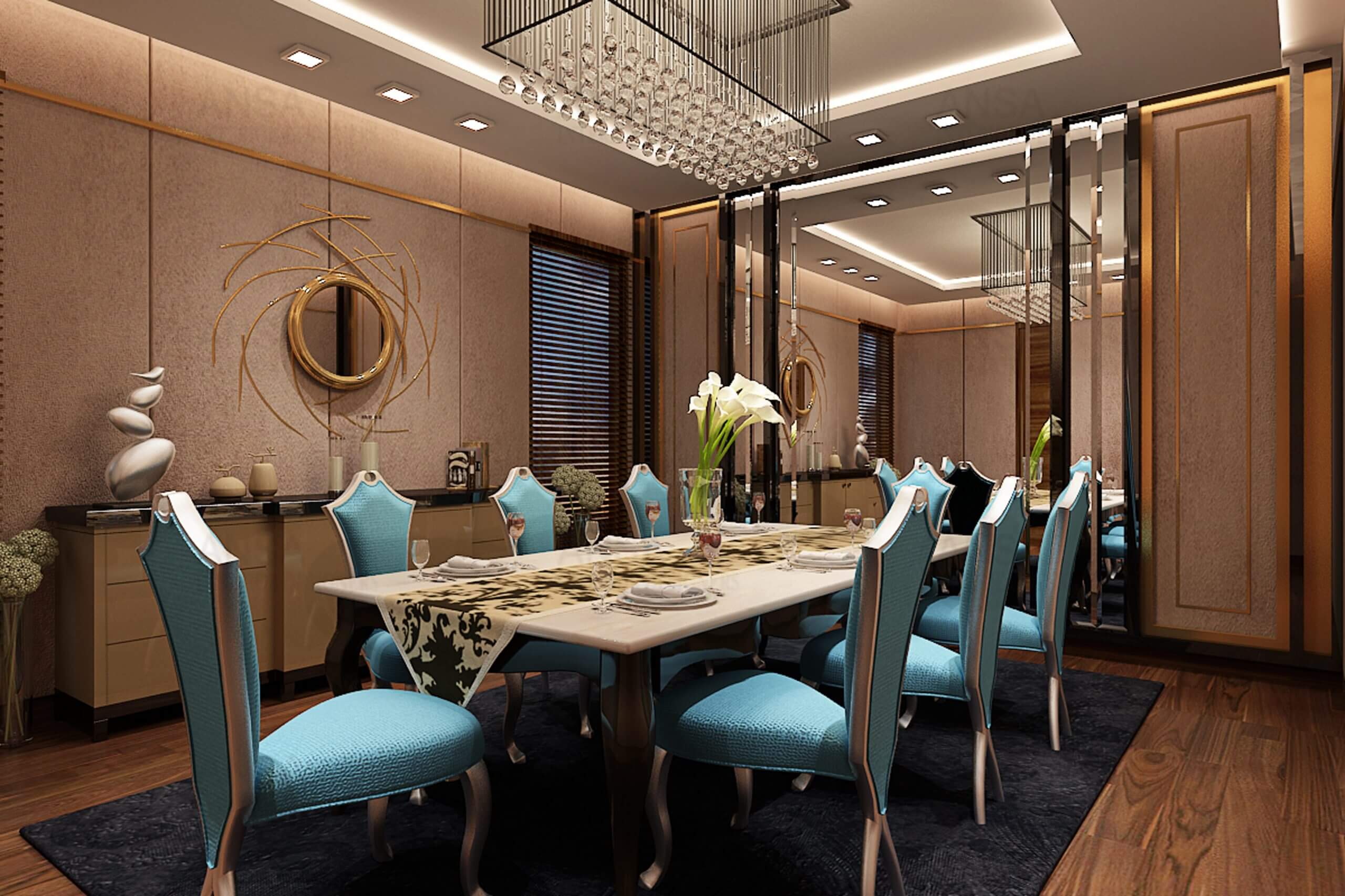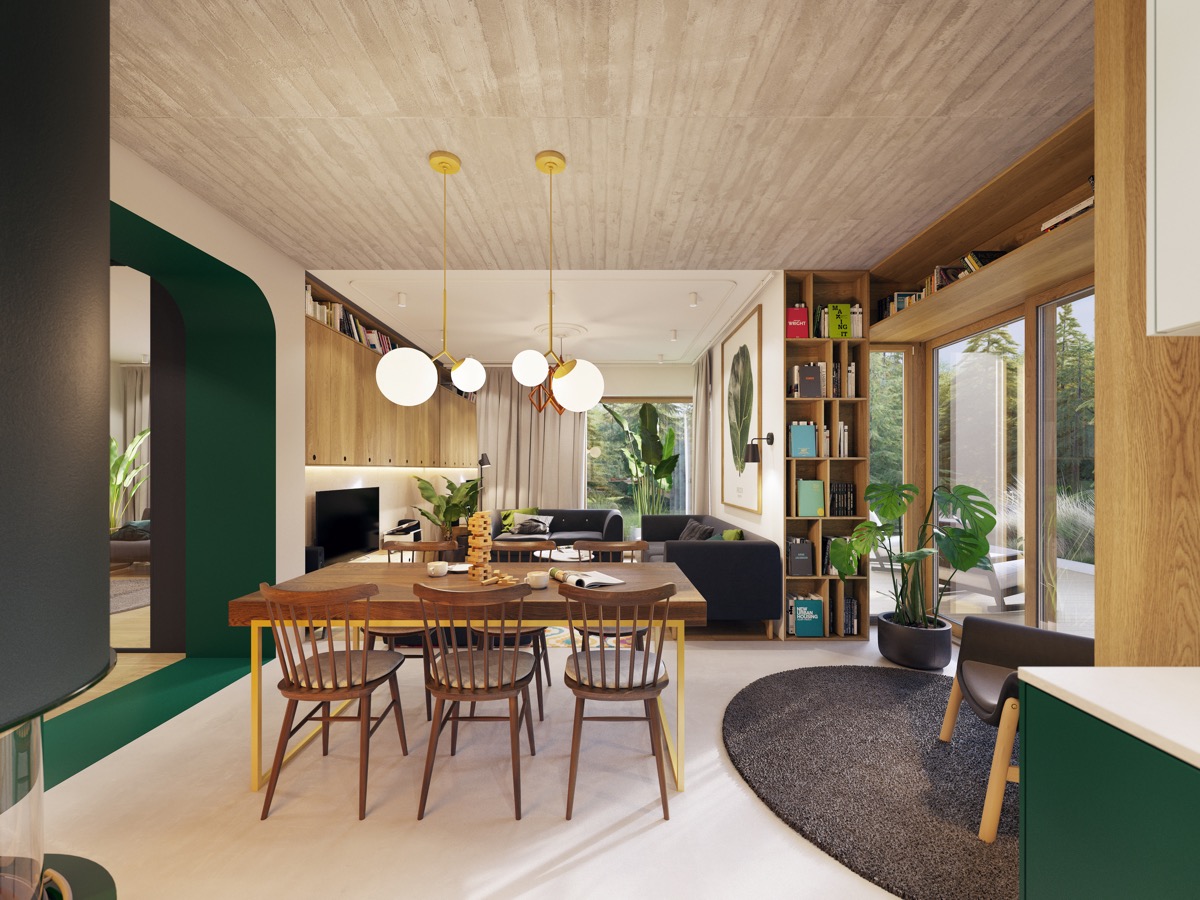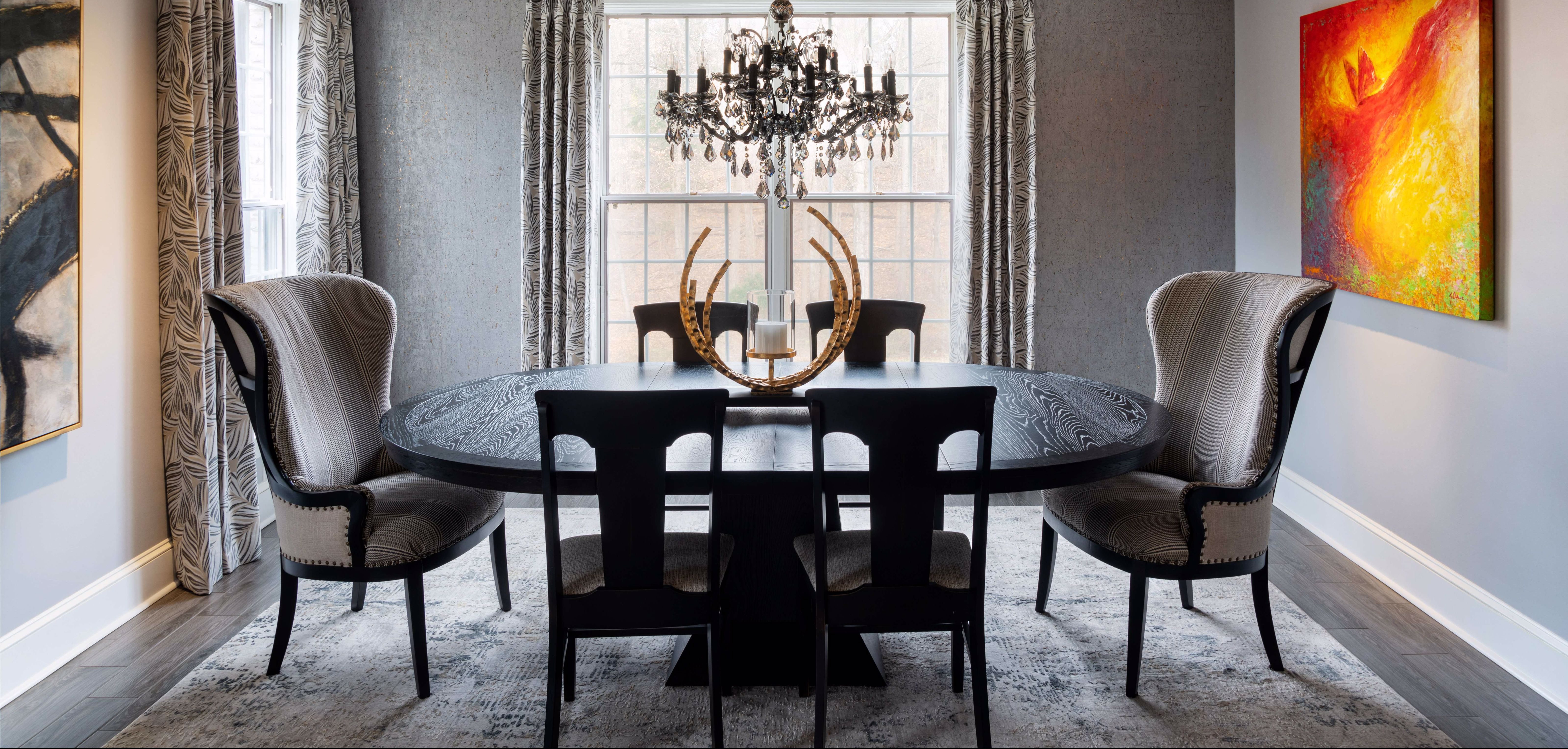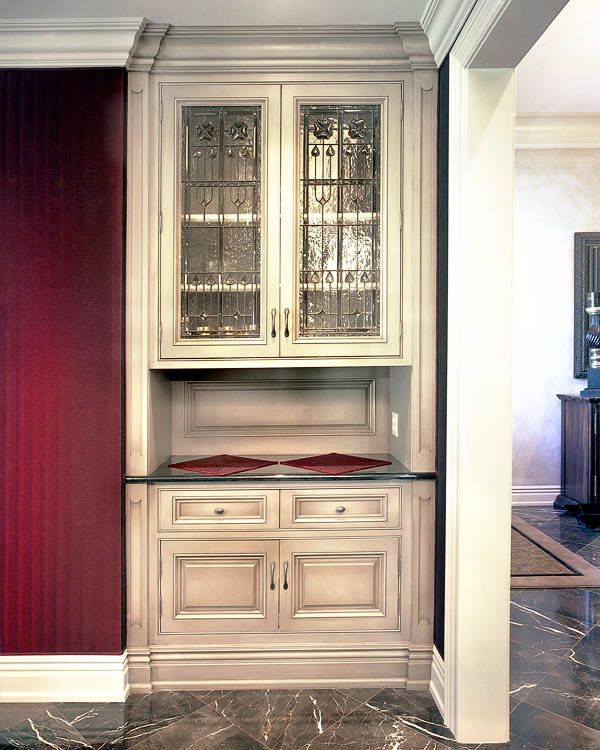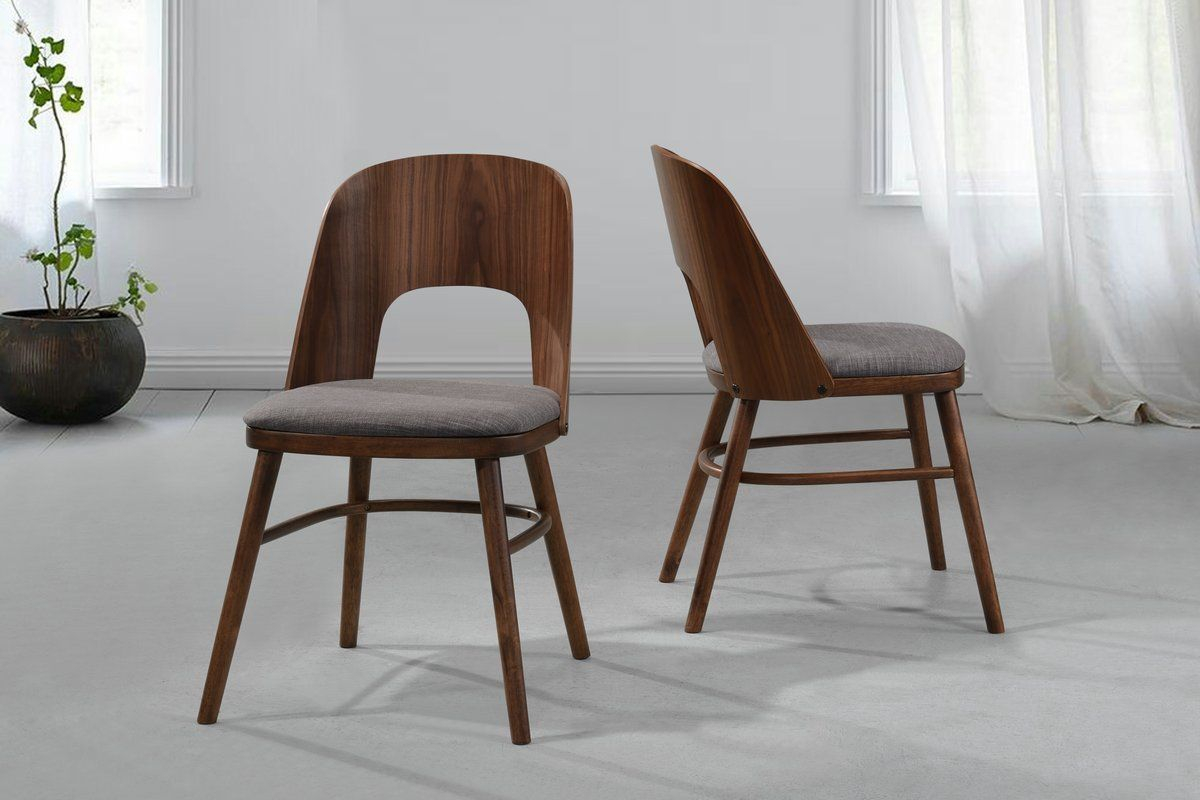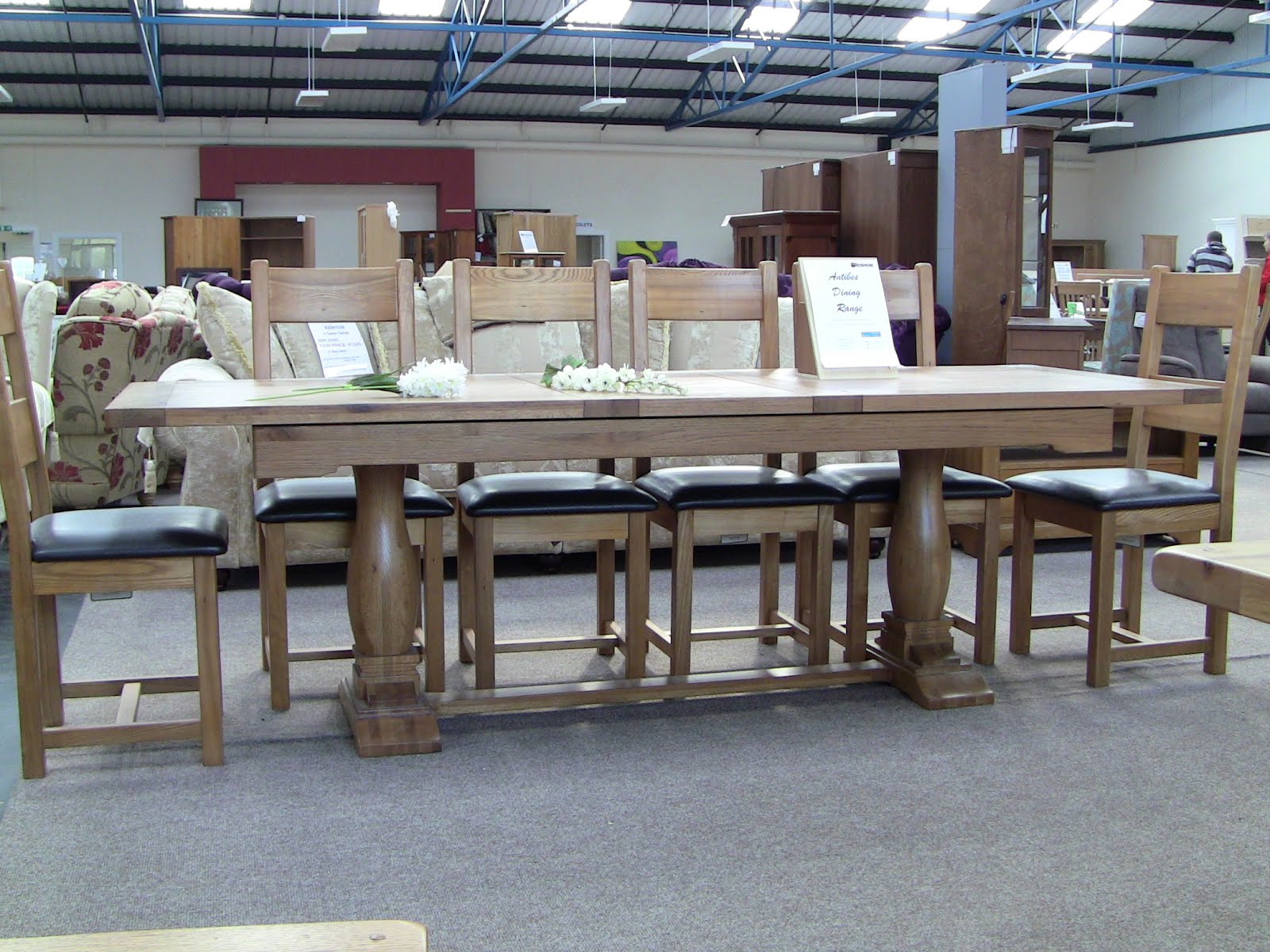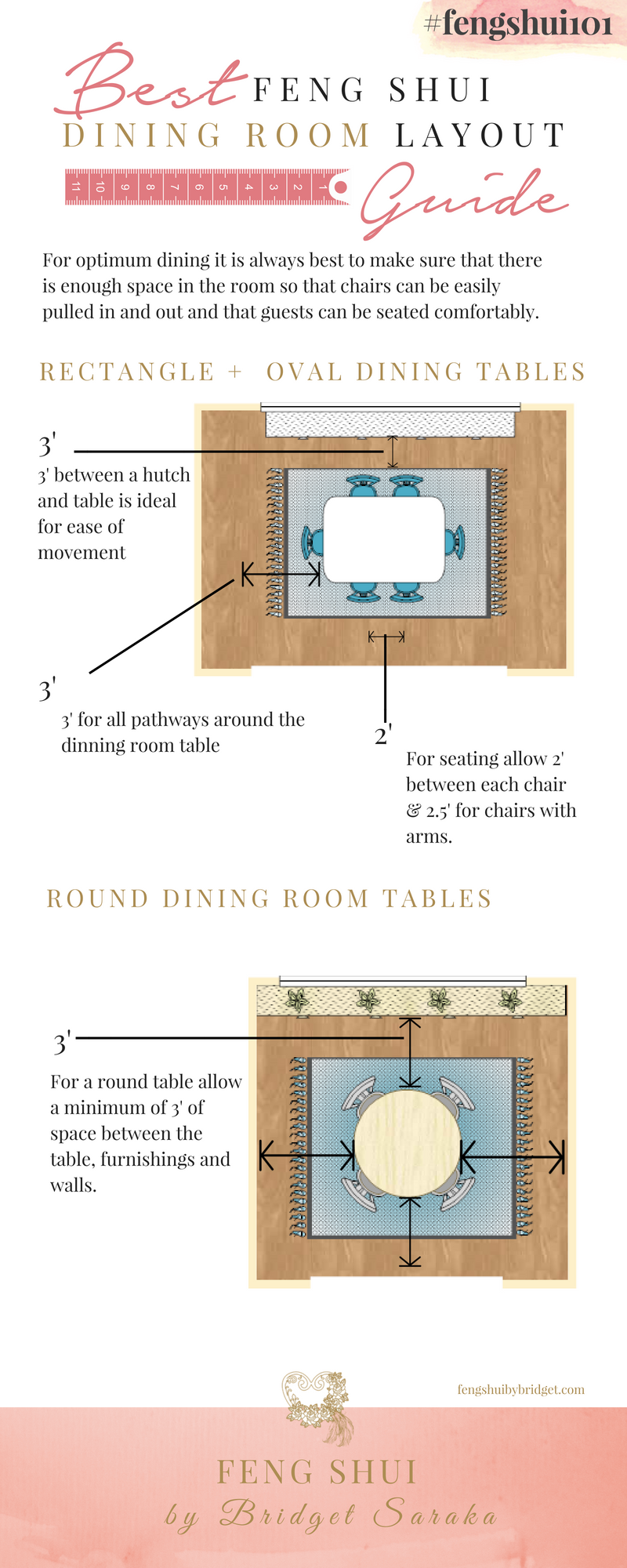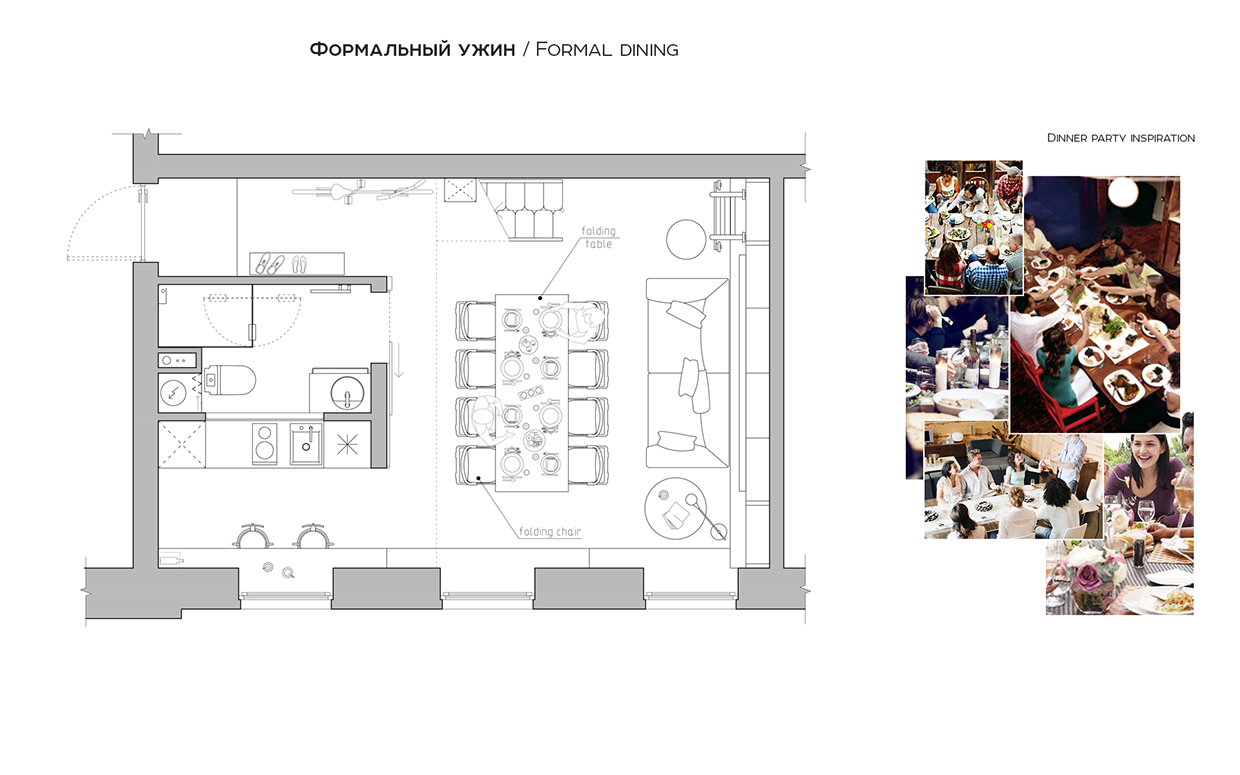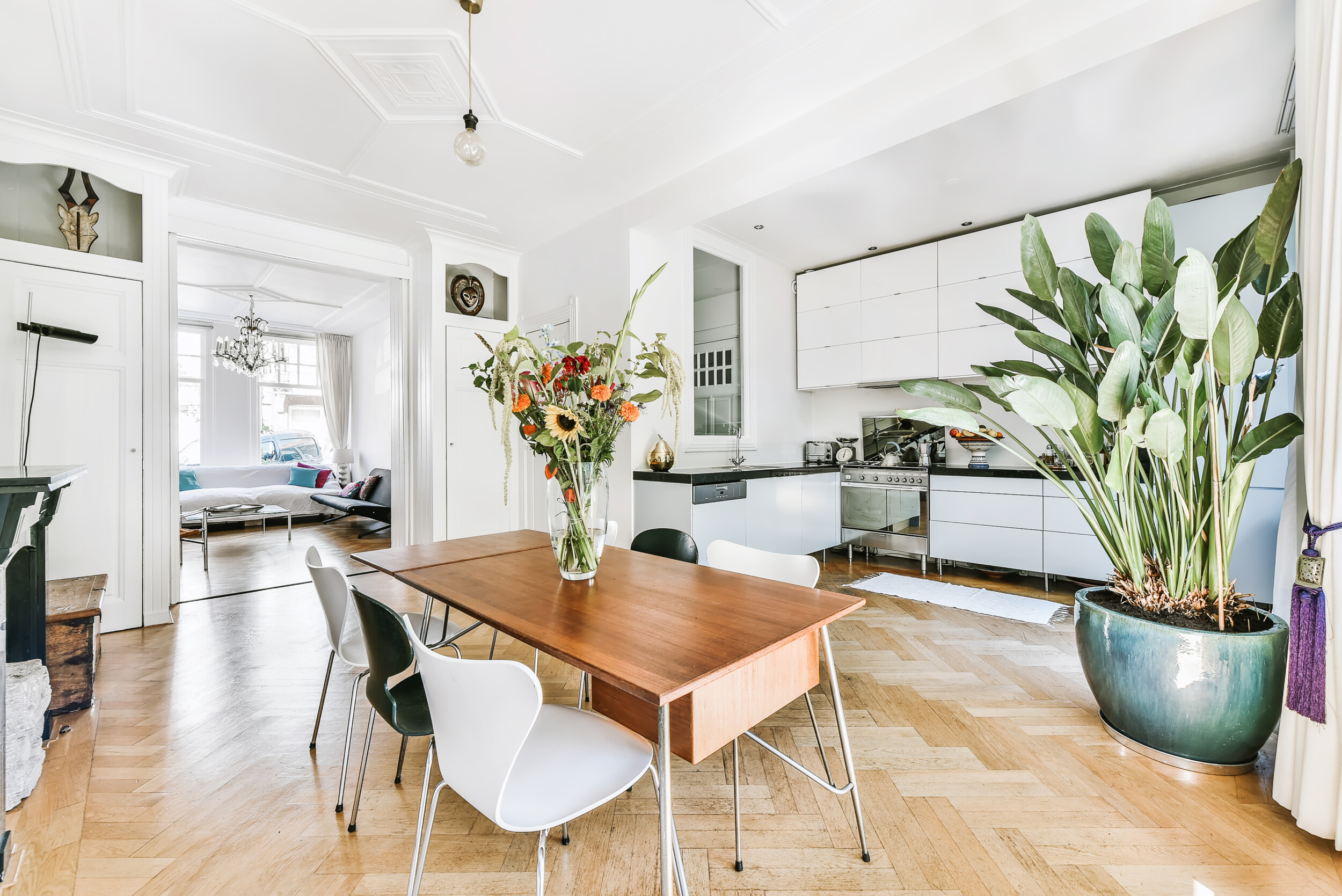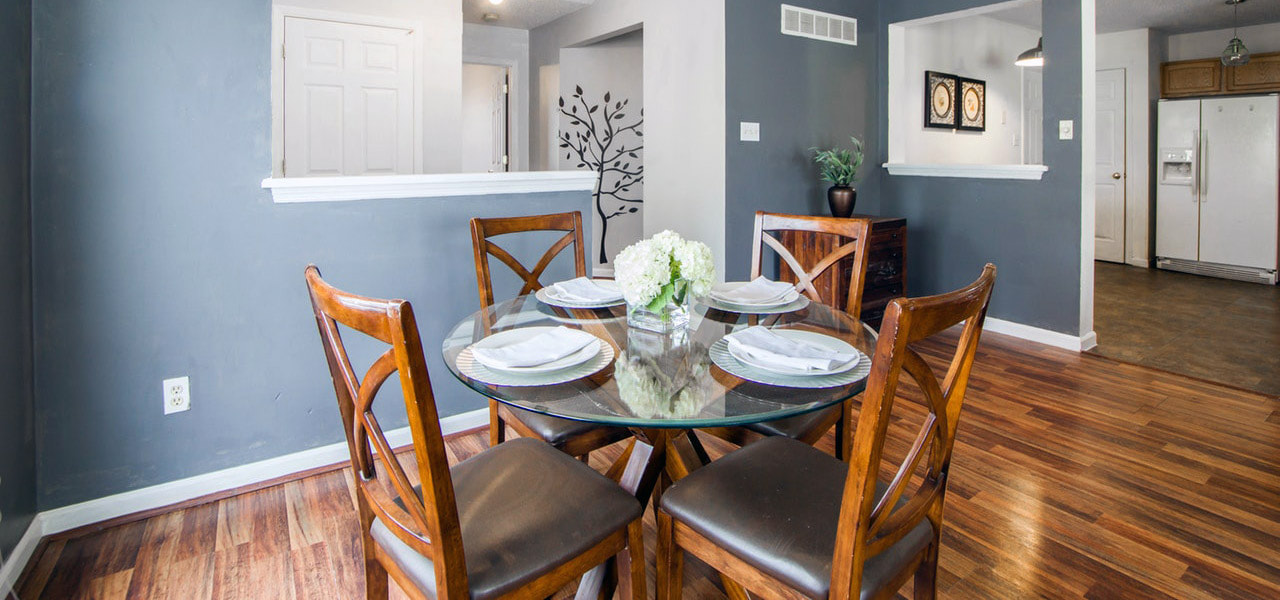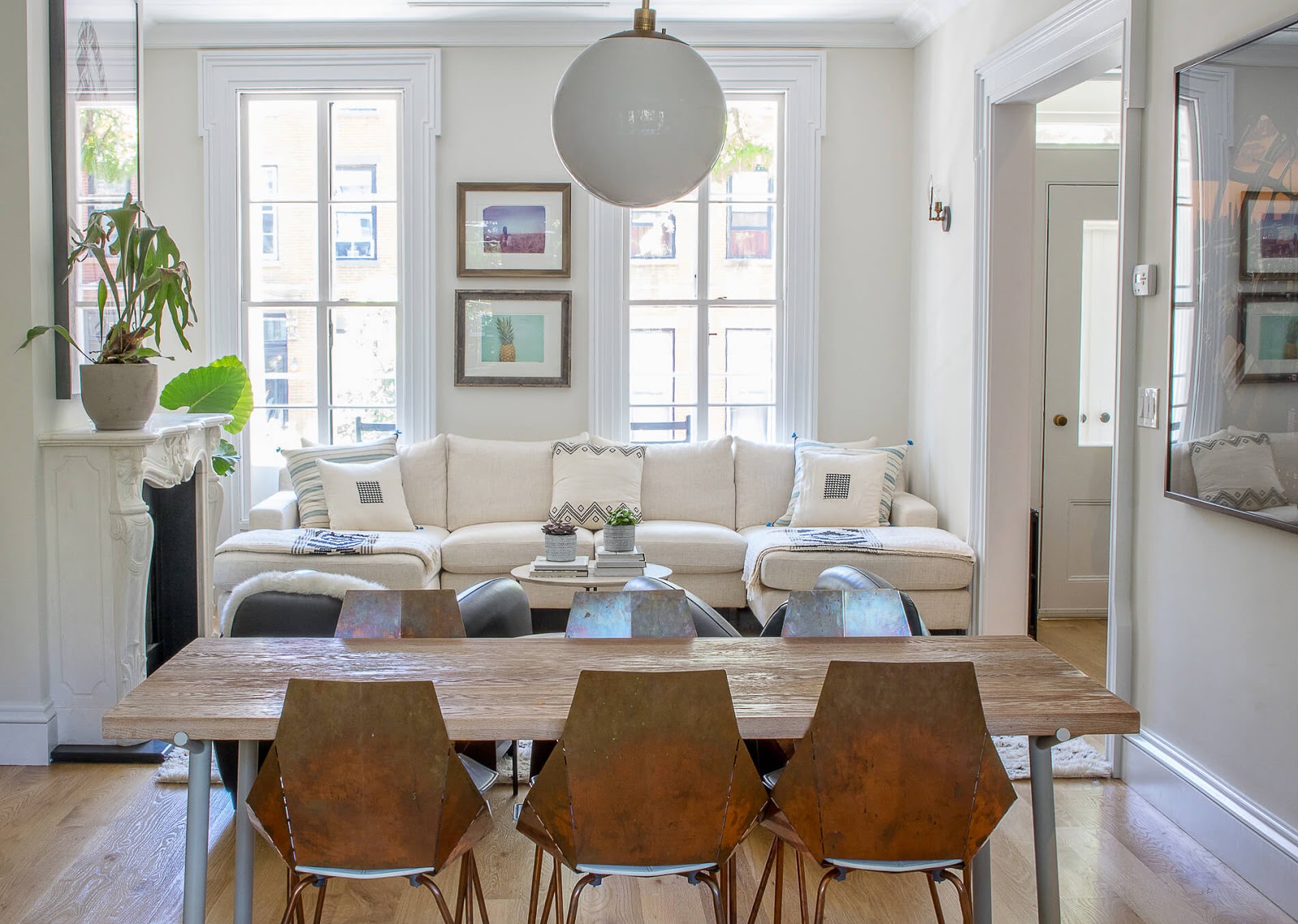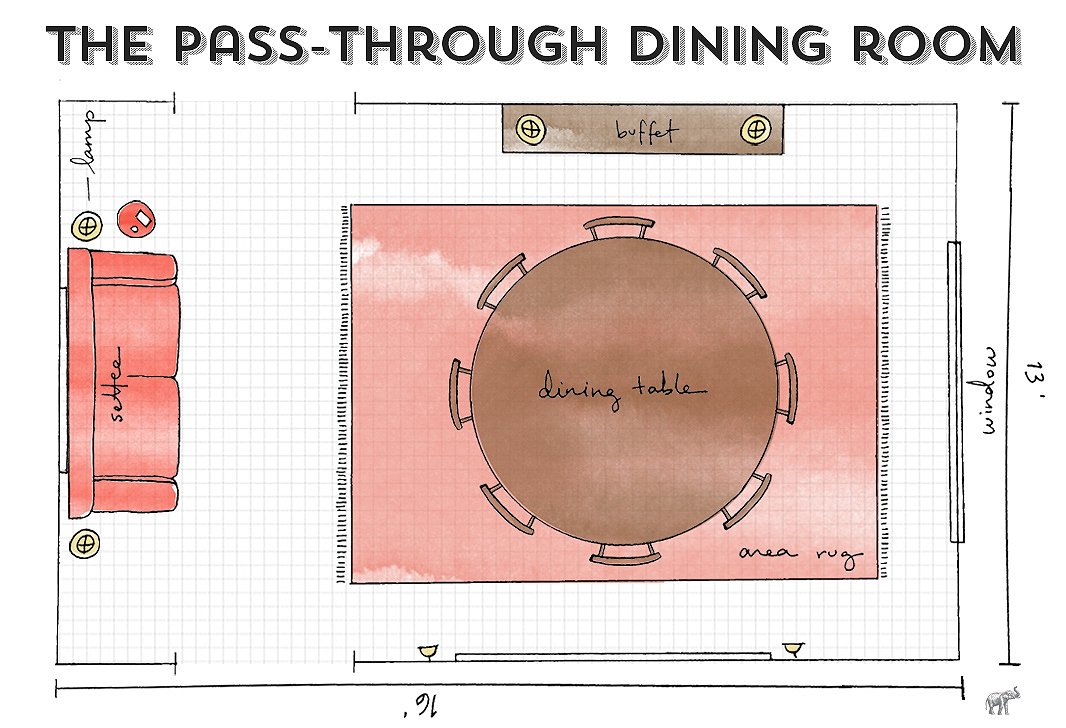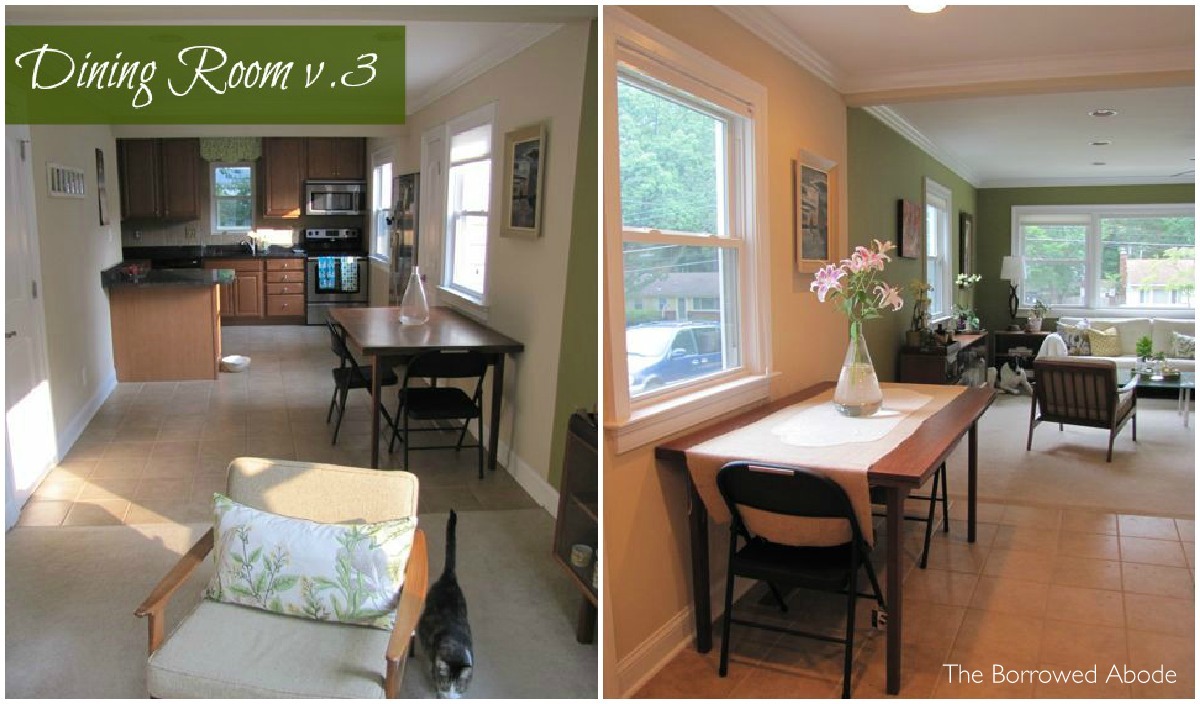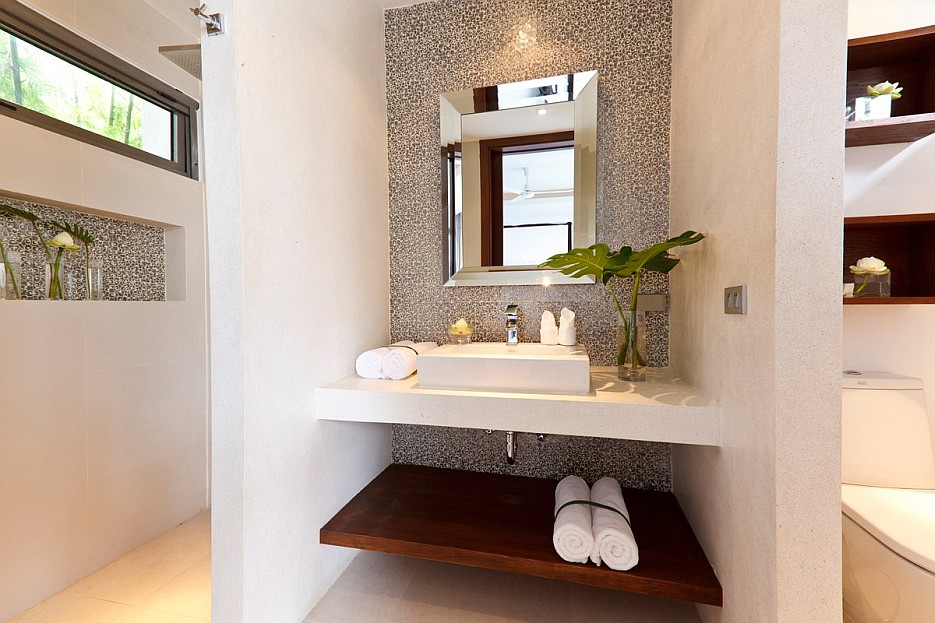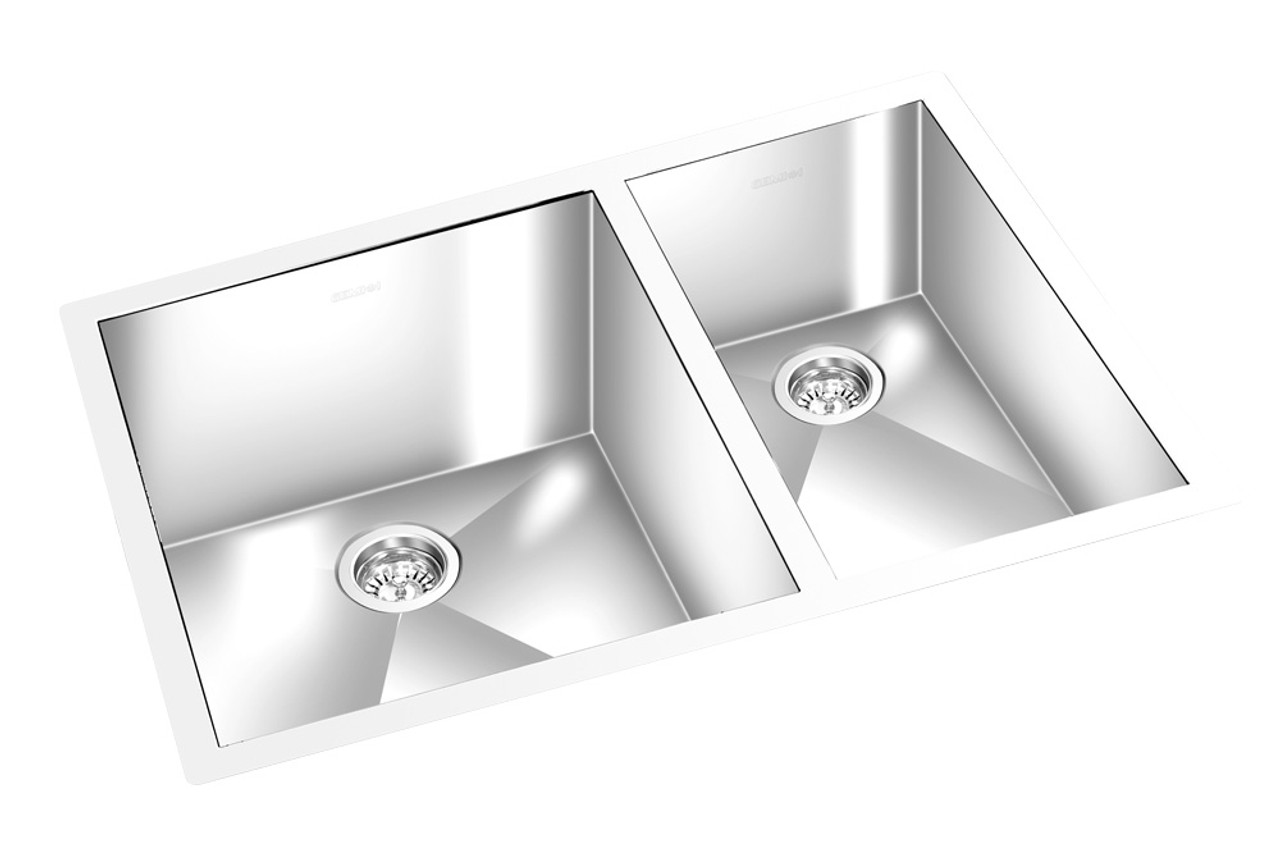Average dining room size
When it comes to designing a dining room, one of the most important considerations is size. After all, you want to make sure that your dining room is not only functional, but also comfortable for you and your guests. But what exactly is the average dining room size? Let's take a closer look.
Standard dining room size
While there is no set standard for dining room size, there are some general guidelines that can help you determine the right size for your space. A standard dining room should be at least 12 feet by 12 feet, with a minimum of 3 feet of space between the wall and the table on all sides. This allows for comfortable movement and seating for 4-6 people.
Ideal dining room size
While the standard dining room size is a good starting point, the ideal size for your dining room will ultimately depend on your personal preferences and needs. If you frequently entertain large groups, you may want a larger dining room that can accommodate a bigger table and more chairs. On the other hand, if you have a smaller family or prefer intimate dinners, a smaller dining room may be more suitable.
Dining room dimensions
When it comes to determining the dimensions of your dining room, there are a few key factors to consider. First, you will need to measure the length and width of the room in feet. Then, you will need to take into account any architectural features or obstructions, such as windows or doors, that may affect the placement of your dining table.
Dining room square footage
The square footage of your dining room is another important factor to consider. This can be calculated by multiplying the length and width of the room. For example, a dining room that is 12 feet by 12 feet would have a total square footage of 144 square feet. Keep in mind that this does not take into account the space needed for chairs and movement around the table.
Dining room measurements
In addition to the overall dimensions and square footage of your dining room, it's also important to consider the specific measurements of your dining table. This includes the length, width, and height of the table, as well as the recommended distance between the table and the walls. These measurements will help ensure that your dining room is properly proportioned and functional for your needs.
Dining room space
Space is a key consideration when it comes to dining room design. Not only do you want enough space for the dining table and chairs, but you also want to make sure there is adequate space for people to move around and access the table. Additionally, you may want to consider leaving space for other furniture, such as a buffet or hutch, to complete the overall look and functionality of your dining room.
Dining room area
The area of your dining room is another important factor to consider. This includes not only the physical space, but also the overall atmosphere and ambiance of the room. The dining room is often a gathering place for family and friends, so you want to create a warm and inviting space that encourages conversation and enjoyment of meals together.
Dining room capacity
The capacity of your dining room refers to the maximum number of people that can comfortably fit in the space. This will depend on the size of your dining table and the amount of space between the table and walls. It's important to consider your typical dining habits and the number of guests you may entertain when determining the capacity of your dining room.
Dining room layout
Finally, the layout of your dining room is a crucial aspect to consider. This includes the placement of furniture, lighting, and any other decorative elements. A well-designed dining room layout will not only be aesthetically pleasing, but also functional and conducive to conversation and enjoyment of meals.
In conclusion, while there is no one-size-fits-all when it comes to dining room size, there are some general guidelines and considerations that can help you determine the right size for your space. By taking into account factors such as dimensions, square footage, and layout, you can create a dining room that is both comfortable and functional for you and your guests.
How to Calculate the Perfect Size for Your Dining Room
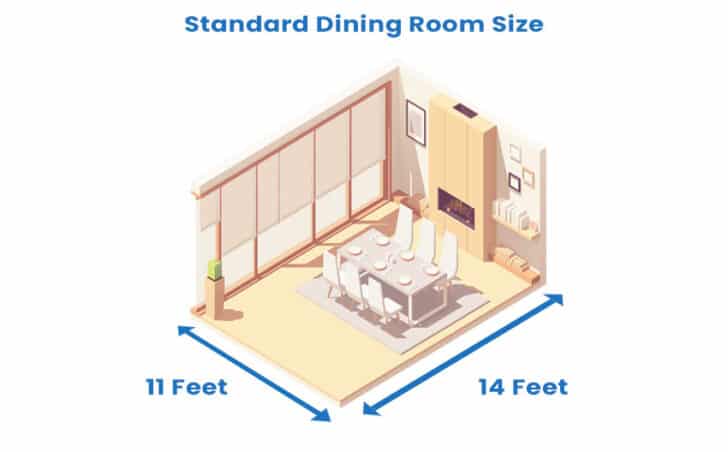
A Guide to Designing the Ideal Dining Space for Your Home
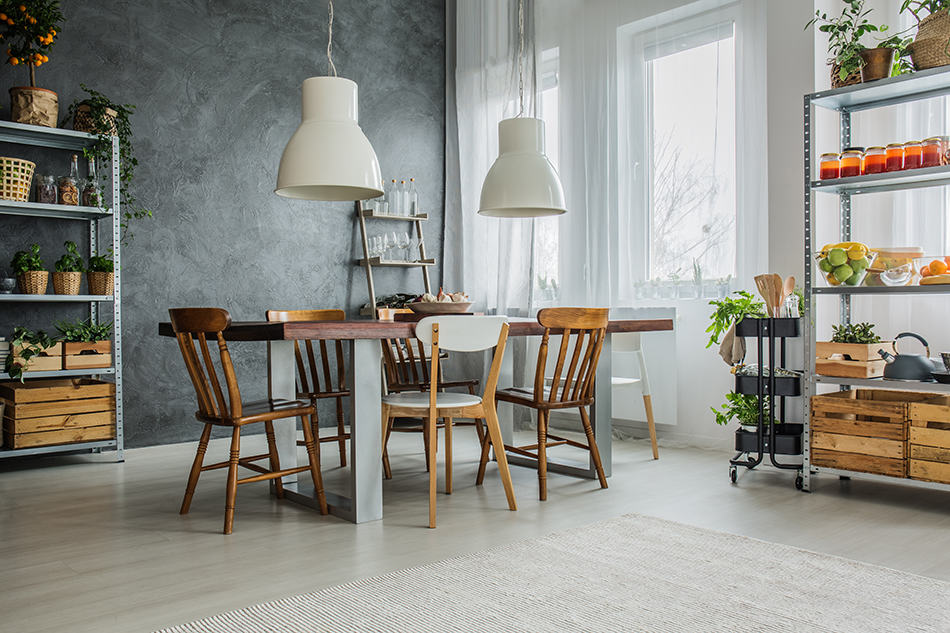 When it comes to designing a house, one of the most important aspects to consider is the size and layout of the dining room. This is where we gather with family and friends to share meals, conversations, and create memories. But with so many different factors to consider, it can be overwhelming to determine the ideal size for your dining room. In this article, we will explore the average dining room size and provide tips on how to calculate the perfect size for your home.
Average Dining Room Size
According to architectural experts, the average dining room size should be around 12 feet by 12 feet (144 square feet). However, this may vary depending on the size of your family and how often you entertain guests. If you have a large family or frequently host dinner parties, you may want to consider a larger dining room to accommodate more people comfortably.
Factors to Consider
When determining the size of your dining room, there are several factors to take into consideration. First and foremost, consider the size of your dining table. You want to make sure there is enough space for chairs to comfortably fit around the table, as well as space to move around the room without feeling cramped. Additionally, think about the flow of traffic in and out of the dining room and how it connects to other areas of your home. You don't want the dining room to feel isolated or disconnected from the rest of the house.
Other Considerations
Aside from the size of your dining table and traffic flow, there are a few other factors to consider when determining the perfect size for your dining room. One important factor is the amount of natural light in the room. A larger dining room with ample windows will feel more spacious and inviting, whereas a smaller room with limited natural light may feel cramped and dark. Additionally, think about the style of your dining room. If you prefer a formal dining experience, a larger room may be more appropriate, whereas a smaller, more intimate room may be better suited for casual meals.
Conclusion
In conclusion, when it comes to designing the perfect dining room, there is no one-size-fits-all approach. The ideal size will depend on your personal preferences, family size, and lifestyle. By considering the factors mentioned above, you can determine the perfect size for your dining room and create a space that is both functional and inviting for all your dining needs. Remember, the dining room is where memories are made, so take the time to carefully consider the size and design of this important space in your home.
When it comes to designing a house, one of the most important aspects to consider is the size and layout of the dining room. This is where we gather with family and friends to share meals, conversations, and create memories. But with so many different factors to consider, it can be overwhelming to determine the ideal size for your dining room. In this article, we will explore the average dining room size and provide tips on how to calculate the perfect size for your home.
Average Dining Room Size
According to architectural experts, the average dining room size should be around 12 feet by 12 feet (144 square feet). However, this may vary depending on the size of your family and how often you entertain guests. If you have a large family or frequently host dinner parties, you may want to consider a larger dining room to accommodate more people comfortably.
Factors to Consider
When determining the size of your dining room, there are several factors to take into consideration. First and foremost, consider the size of your dining table. You want to make sure there is enough space for chairs to comfortably fit around the table, as well as space to move around the room without feeling cramped. Additionally, think about the flow of traffic in and out of the dining room and how it connects to other areas of your home. You don't want the dining room to feel isolated or disconnected from the rest of the house.
Other Considerations
Aside from the size of your dining table and traffic flow, there are a few other factors to consider when determining the perfect size for your dining room. One important factor is the amount of natural light in the room. A larger dining room with ample windows will feel more spacious and inviting, whereas a smaller room with limited natural light may feel cramped and dark. Additionally, think about the style of your dining room. If you prefer a formal dining experience, a larger room may be more appropriate, whereas a smaller, more intimate room may be better suited for casual meals.
Conclusion
In conclusion, when it comes to designing the perfect dining room, there is no one-size-fits-all approach. The ideal size will depend on your personal preferences, family size, and lifestyle. By considering the factors mentioned above, you can determine the perfect size for your dining room and create a space that is both functional and inviting for all your dining needs. Remember, the dining room is where memories are made, so take the time to carefully consider the size and design of this important space in your home.





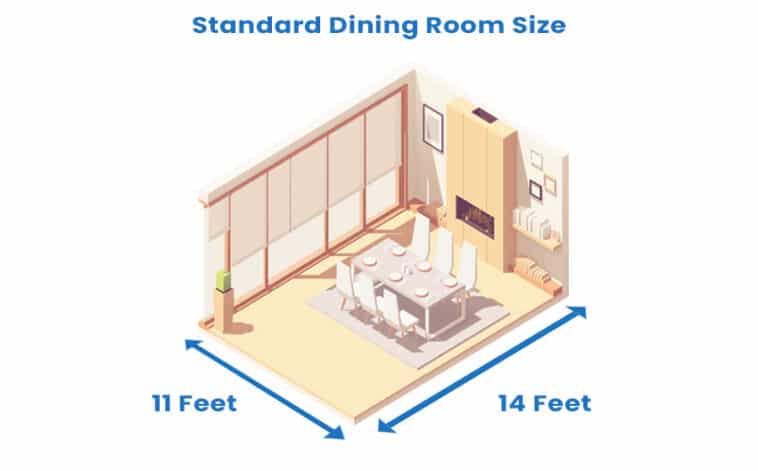
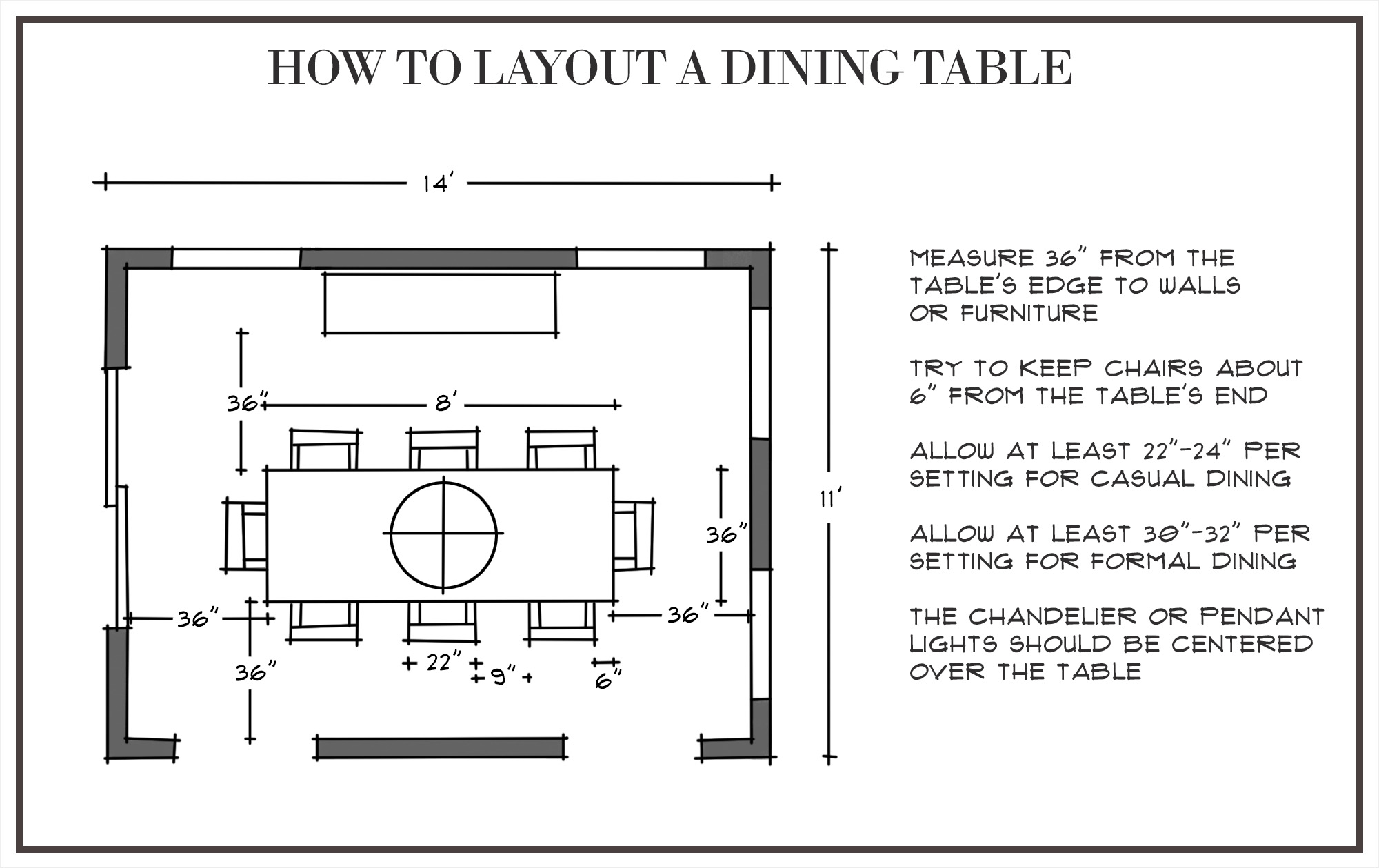









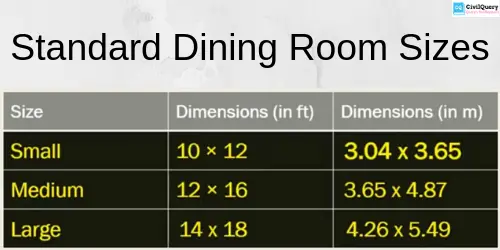





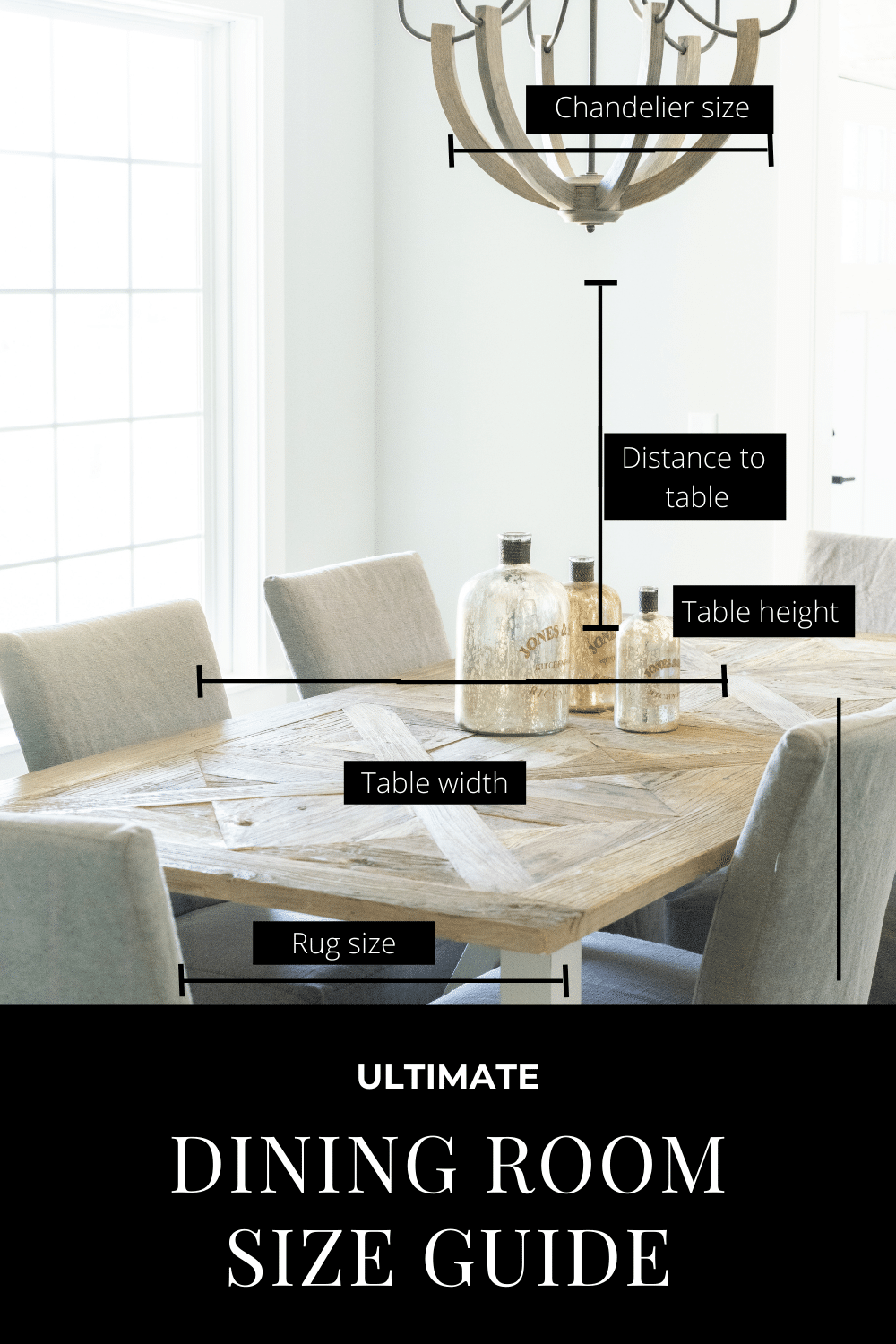












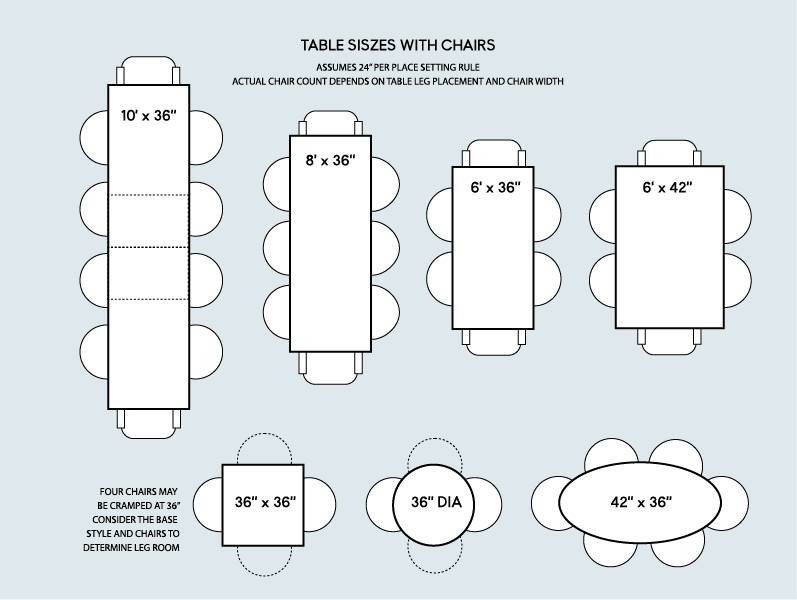








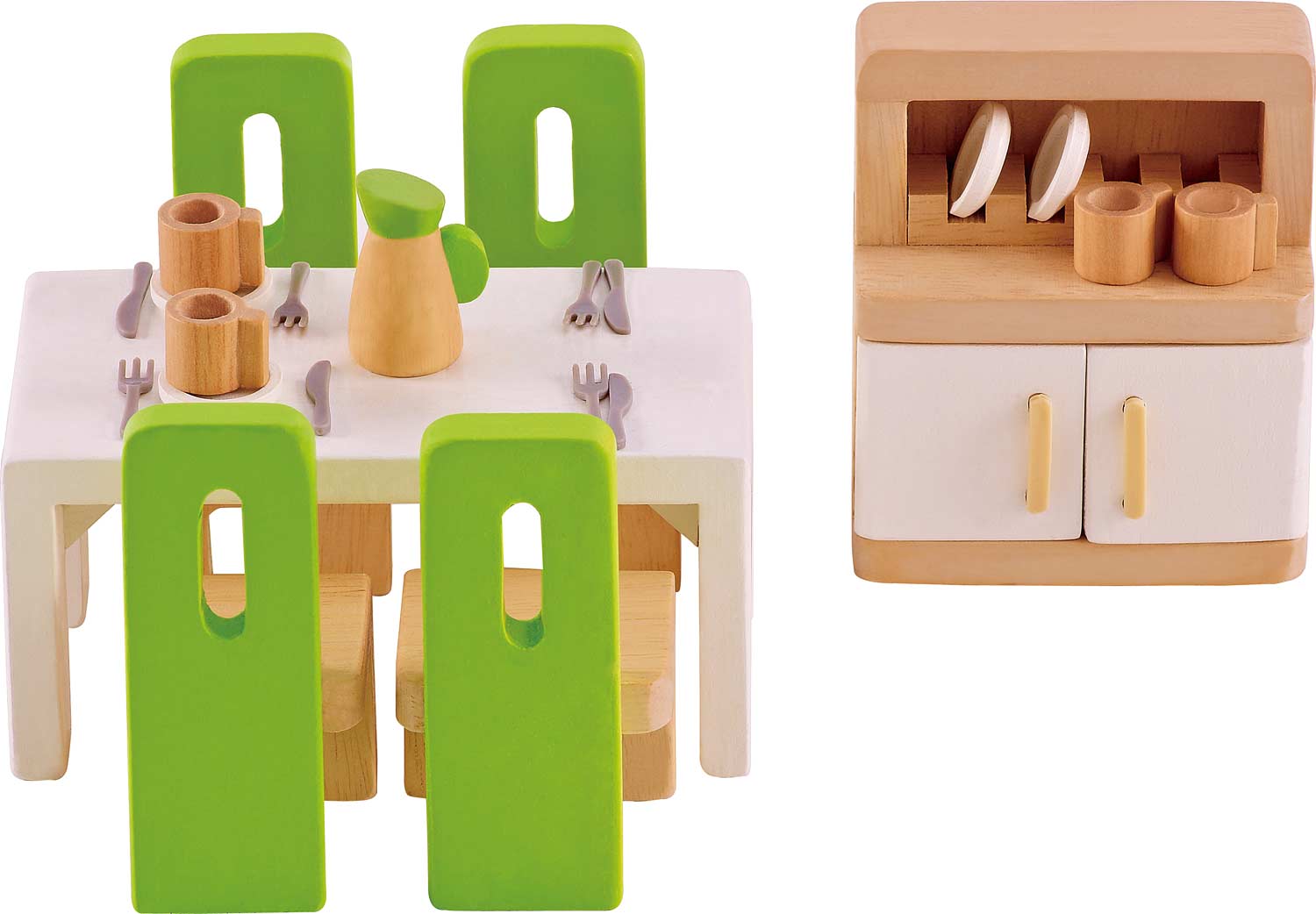



:max_bytes(150000):strip_icc()/standard-measurements-for-dining-table-1391316-FINAL-5bd9c9b84cedfd00266fe387.png)





/orestudios_laurelhurst_tudor_03-1-652df94cec7445629a927eaf91991aad.jpg)





